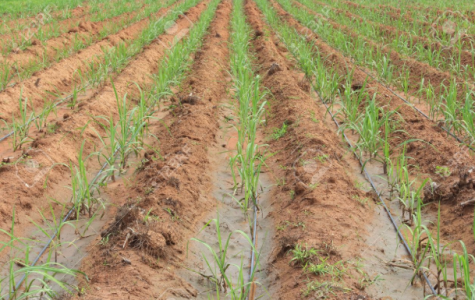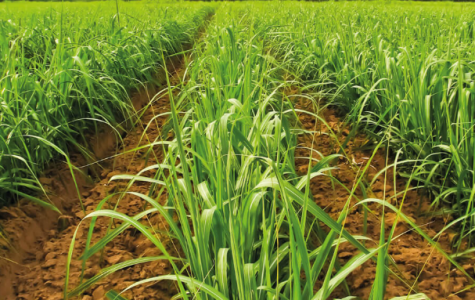The sugar cane is a plant which assimilates easily the solar radiation, having a efficiency near the 2% of energy conversion incidental in the biomass. This capacity increases the commercial possibilities to the profit of numerous products to extract, in most of the cases of higher value and economic importance than sugar.
The cultivation of sugar cane presents itself as an opportunity of high value against other types of cultivations. Nevertheless, this crop also suffers the problems of water shortage. Taking into account this reality, and the efficiency and advantages of the drip irrigation practices already commented, this last one is an excellent way of improving in the agricultural exploitations where this crop is already introduced.
Sugar cane does not support temperatures lower to 0ºC, although sometimes it stands until -1ºC, depending on the time of the freeze. To grow up it need temperatures from 14ºC to 16ºC. The optimal temperature for growing is around the 30ºC, with high relative humidity and good water supply.
It is able to adapt to all kind of soils, growing better and giving more sugar if the water and the fertilizers are the suitable ones. Only in acid soils, difficult to find in areas where the sugar cane is cultivated in Spain, it generates serious problems.
There are two basic models: in simple lines, 125-150 cm of spacing among them, or double lines, with a 90cm of spacing inside each pair and of 180-210 cm between a pair and the other.
The sugar cane needs plenty of water and nitrogen, phosphorus, potassium, and some trace elements to its fertilization. The drip irrigation erases the common uncertainly of the agricultural tasks depending on the water coming from the natural phenomenon. Nevertheless, the traditional irrigation used in the commercial growing of sugar cane does not allow the use its high genetic potential to the production of biomass and reduce the efficiency of the available human and natural resources.
The humidity levels have to be the correct around the seed of the cane to favour the germination of the leaf buds, guaranteeing an uniform outbreak and a high quantity of stems (sprouts).
Irrigation must guarantee, with the adequate design of the system, the right frequency and time of irrigation, as a high humidity level in the first 40 cm taking into account that in this area we can find the biggest root density. The shape and extension of the dump bulb must guarantee and suitable development of the roots with the enough volume of soil and adequate humidity.
The irrigation system has to permit the control of the humidity levels in the soil to obtain, in this way, the stress levels in the crop which slow down the vegetative growing and induce to the accumulation of sugars and ripening.

